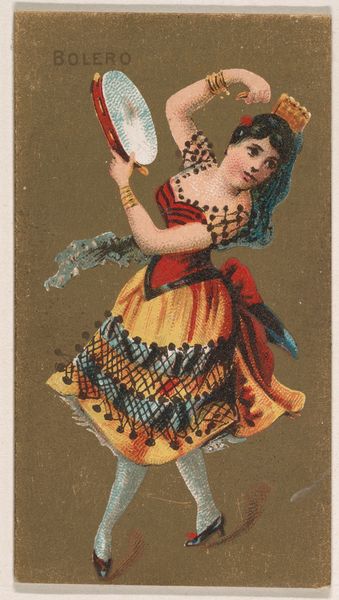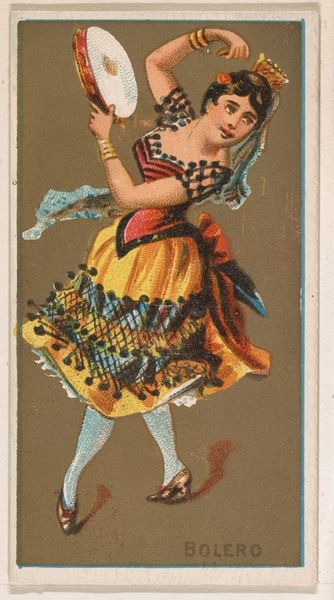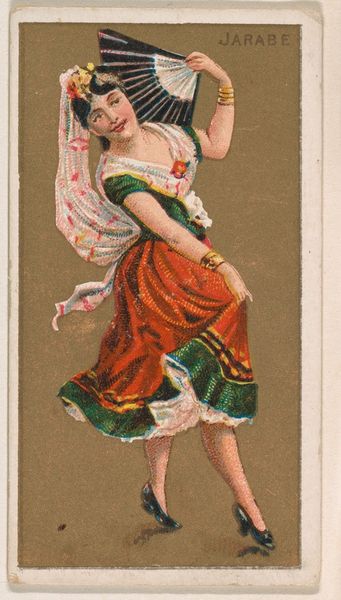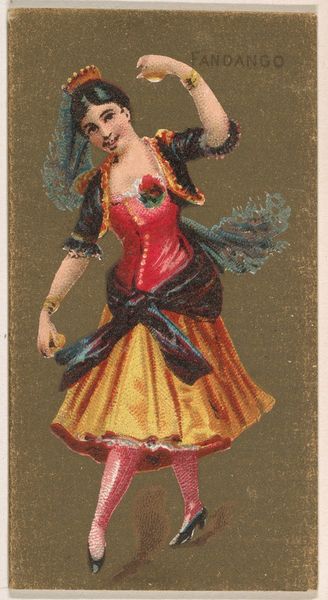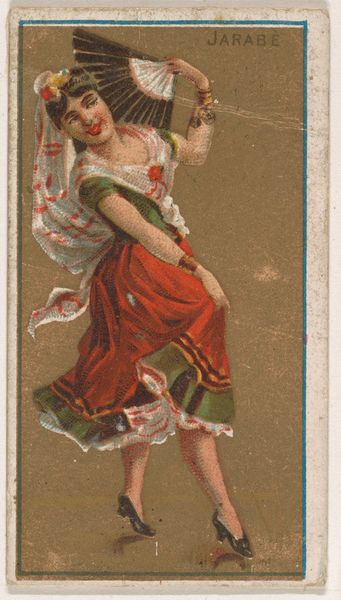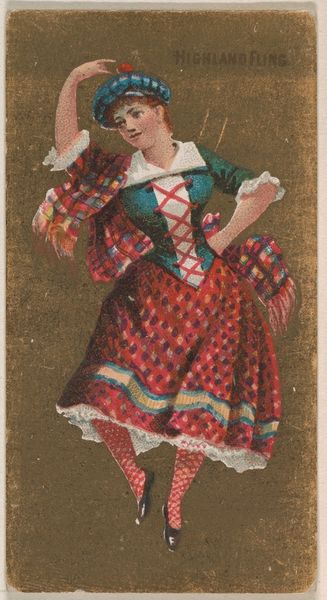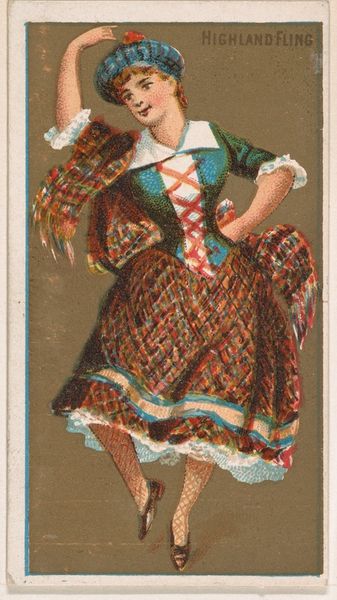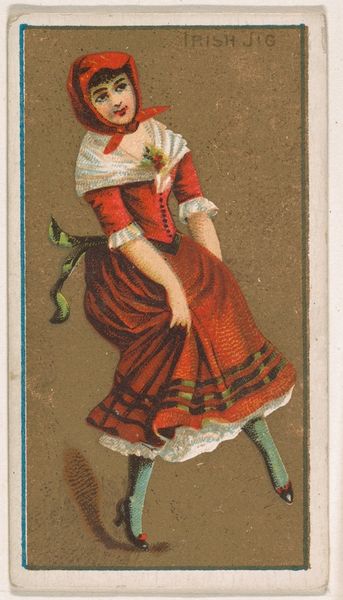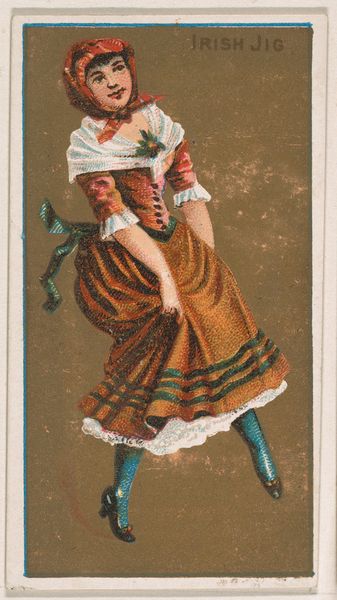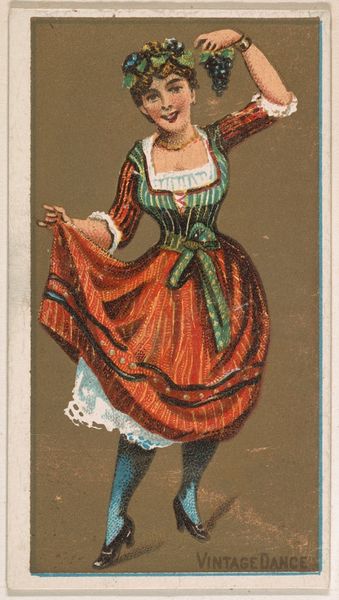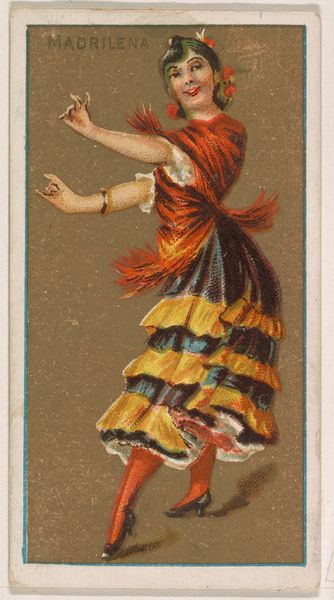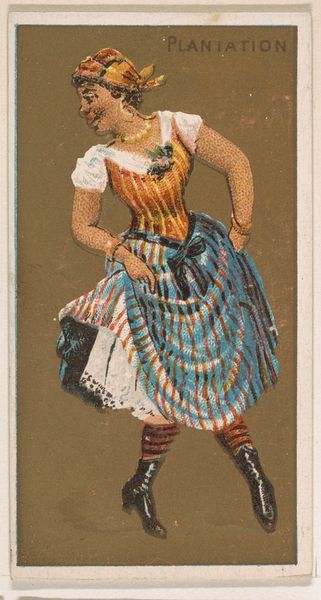
Bolero, from National Dances (N225, Type 1) issued by Kinney Bros. 1889
0:00
0:00
Dimensions: Sheet: 2 3/4 × 1 1/2 in. (7 × 3.8 cm)
Copyright: Public Domain
Curator: What we have here is a print called "Bolero, from National Dances," issued around 1889 by the Kinney Brothers Tobacco Company. It's made using color pencils and some watercolor techniques on paper. Quite vibrant, isn't it? Editor: Indeed. It feels...nostalgic, but also a bit like an idealized, almost flattened image of a dancing figure, reminding me of the influence of ukiyo-e on Art Nouveau aesthetics, combined with an exoticized version of Spanish culture typical for this time. How were these prints typically used? Curator: They were primarily inserts in cigarette packs. So mass-produced, but aiming for some artistry, wouldn’t you say? The printing process involved chromolithography, a technique allowing for a wide array of colors and detail. It's interesting to consider the labor involved, both artistic and industrial. The artist creating the initial image, the technicians preparing the lithographic stones, and the factory workers packaging the cigarettes. A whole chain of production supporting, well, a quite damaging consumption habit if you ask me! Editor: Exactly. Think about who this imagery was designed to appeal to – predominantly male smokers of the late 19th century. The "exotic" Spanish dancer, likely envisioned through a very white, Western lens, becomes a commodity alongside the tobacco. There's a direct link to gender and power dynamics inherent in advertising and consumption patterns of the time. This is so different from how bolero or flamenco truly functions in their communities of origin as dance forms! Curator: Absolutely. This isn't about cultural exchange but cultural appropriation. The artist is nameless in most of these series, the brand the real protagonist...Still, when we look at it from a distance of more than a hundred years, it's still capturing, isn’t it? Editor: It captures a specific moment and its complicated entanglements. How commerce shapes representation, and how identity becomes packaged and sold. And frankly the print method makes me question the boundaries of fine art versus consumer goods of the time! I'm interested in its role within power structures, how it participated in the objectification, orientalism and othering of foreign women as consumer objects. Curator: An ambivalent item. Art? Packaging? Product of an oppressive industry, yes, certainly. And product of skilled craft and design work all the same. Editor: That’s where its value truly lies, for me: in unraveling those interwoven, contradictory forces. The image can now act as a tool to help bring awareness of social injustices and power differences still present nowadays.
Comments
No comments
Be the first to comment and join the conversation on the ultimate creative platform.
